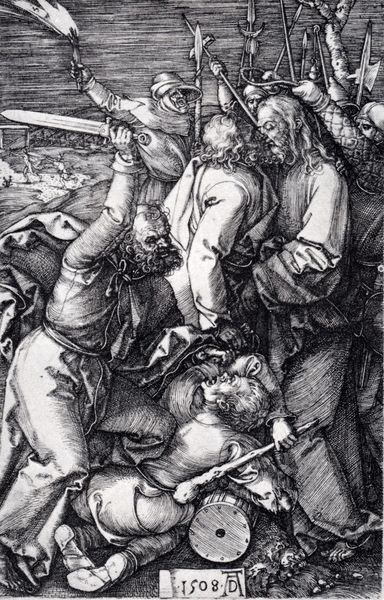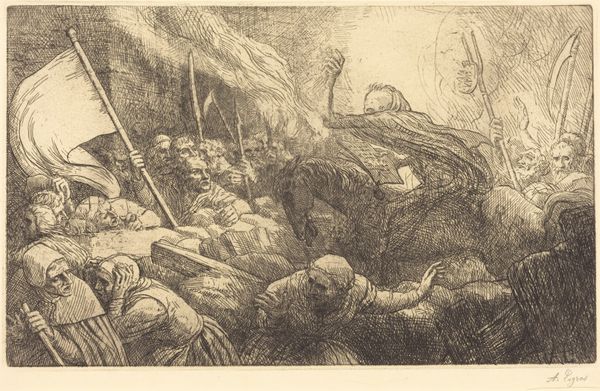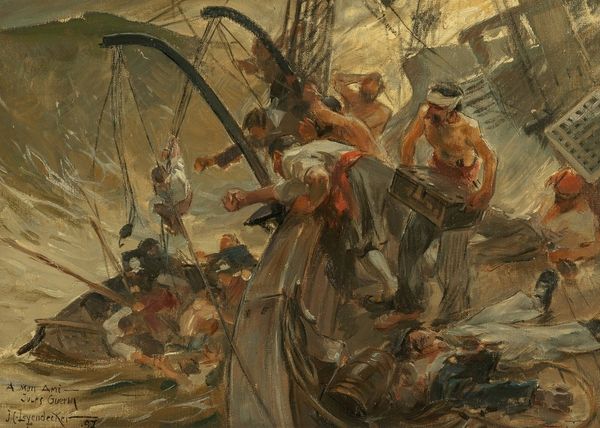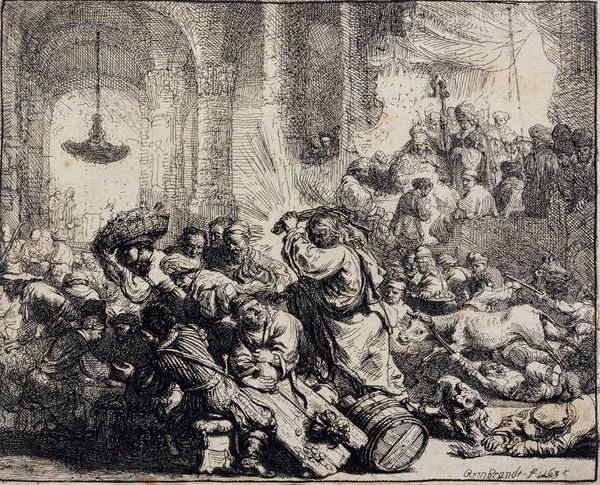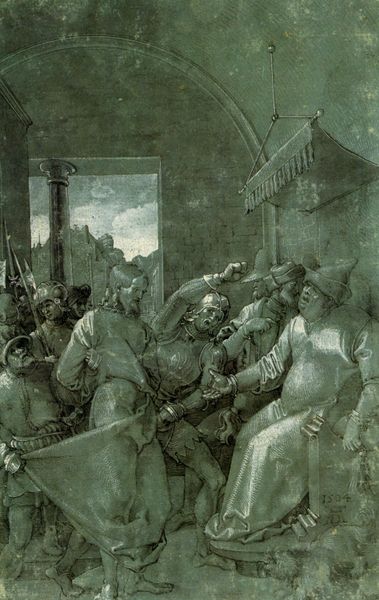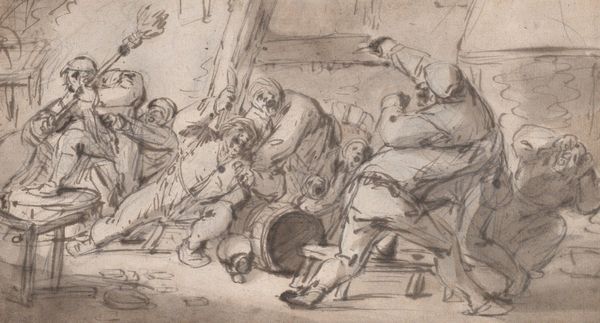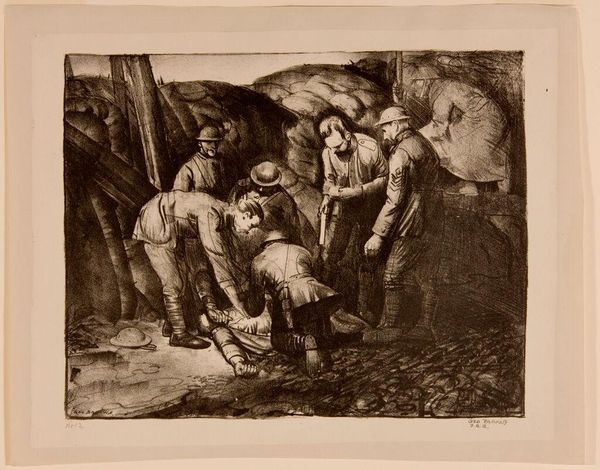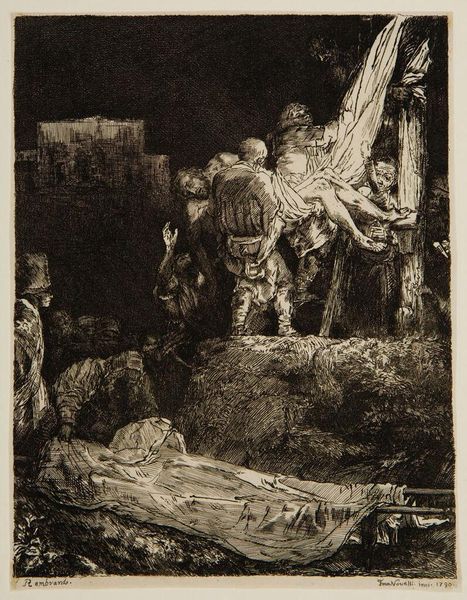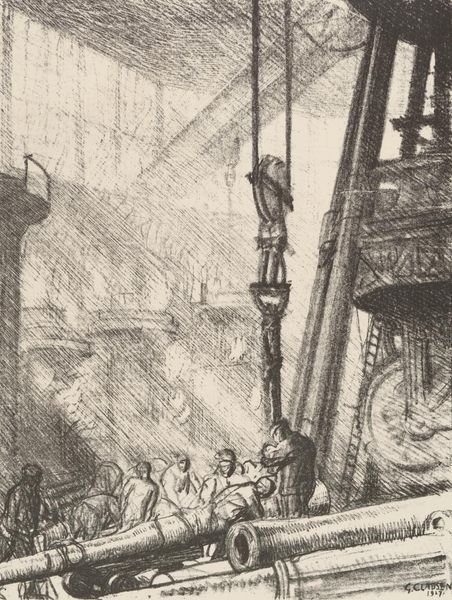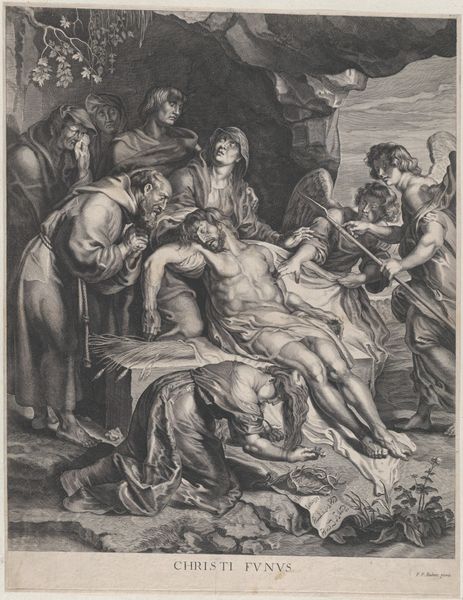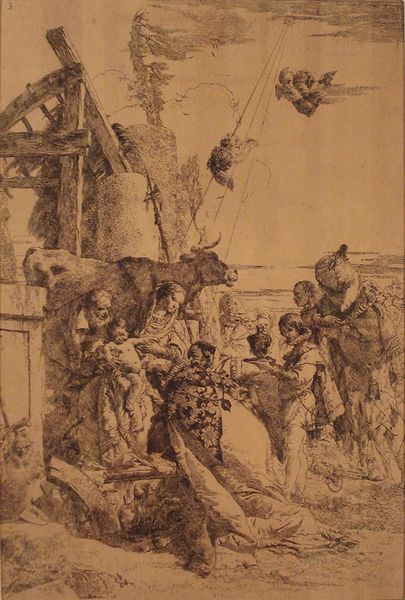
drawing, graphic-art, charcoal
#
drawing
#
graphic-art
#
charcoal drawing
#
figuration
#
charcoal art
#
group-portraits
#
romanticism
#
charcoal
#
history-painting
#
charcoal
Copyright: Public domain
Editor: Here we have Honoré Daumier's "The Riot or Scene of Revolution, or Destruction of Sodome," a charcoal drawing that feels incredibly chaotic. The figures are packed so tightly, and their expressions… they’re just raw. What do you see in this piece? Curator: What I see is a reflection of the tumultuous social and political climate of 19th-century France. The lack of clear dating actually invites us to consider how the artist interpreted repeated events in French society. Think about the revolutions, the unrest… this image resonates with those moments. Look at the bodies, they're not just figures; they're embodiments of collective struggle. What historical parallels do you draw? Editor: Well, I immediately thought about the French Revolution, given the title alludes to revolution. It's hard not to see echoes of the Reign of Terror, just from the… almost grotesque…expressions. But is Daumier glorifying this or critiquing it? Curator: That's a vital question! I don't believe it's simple glorification. Daumier often critiqued power structures, but he also deeply empathized with the working class. The ambiguity in the work creates space to see both the violence and the desperation of a populace pushed to its limits. Consider how the light and shadow play across the figures - do they highlight the heroic or the horrific? Editor: I think it’s both. There’s a sense of… inevitability. Like this violence is the only outcome they could reach. Curator: Exactly. This speaks to the intersection of social injustice and human action. Daumier asks us to examine the conditions that breed such upheaval, the power dynamics at play, and our own roles in perpetuating or dismantling those systems. What did you learn? Editor: It’s much more nuanced than I initially thought. It's not just about depicting a riot, but interrogating the reasons *why* it's happening. It makes you really consider history in all its complexity, the good and the really, really bad.
Comments
No comments
Be the first to comment and join the conversation on the ultimate creative platform.
